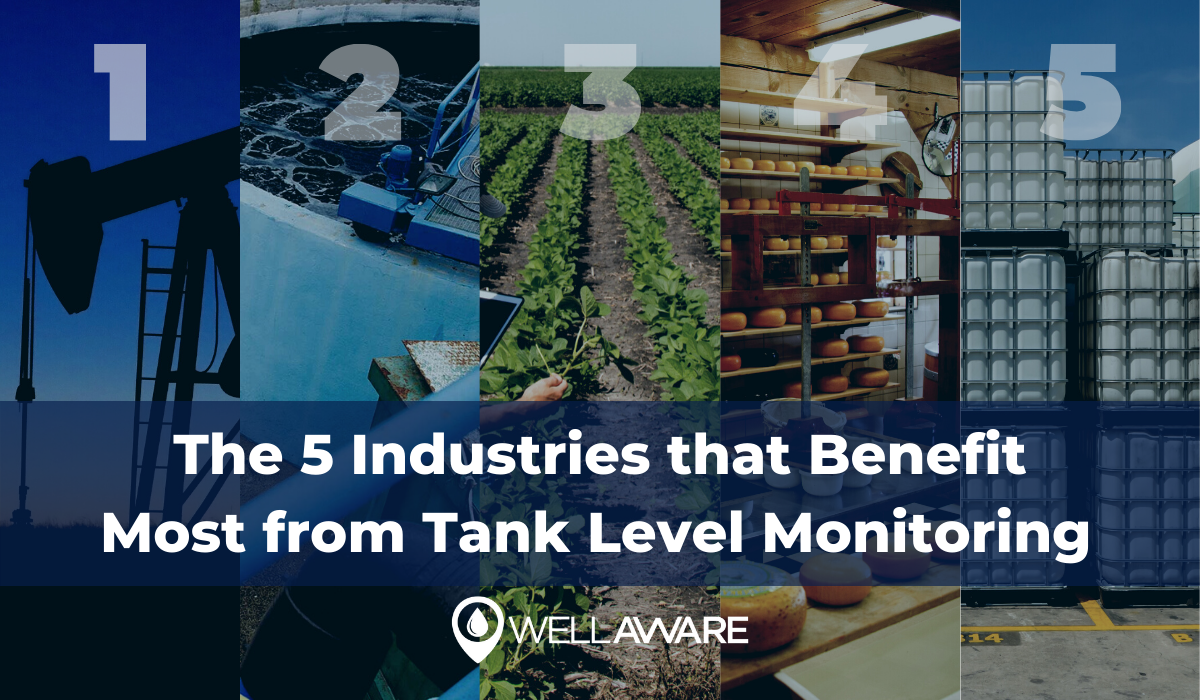
News, Insights, and more on Industrial IoT

We’ve talked a lot about what remote tank monitoring is and how we implement it through our latest blog series. In this post, we zoom out and discuss how tank level monitoring is actually used in different industries to achieve meaningful business results. After all, that is the goal.
So, what types of businesses have the most to gain by using smart tank level sensors?
In our experience, organizations in these five specific industries benefit especially from remote tank monitoring:
Tip: Click the links above to jump to each section.
In each of these sectors, operators use remote tank monitors to collect rich field data, enhance operational efficiency, improve safety, increase profitability, and much more. By highlighting a few real-world use cases here, we hope to spark ideas for how you can take advantage of remote tank level monitoring in your industry.
 Oil & Energy Industry
Oil & Energy IndustryCrude oil and its derivatives are the lifeblood of the oil and energy industry (H/T to natural gas, but crude oil takes the cake here). We need tanks to store these liquid substances and everything they help produce. Lots and lots of tanks.
For example, oil and energy companies use tanks upstream for production storage, production chemicals, and fracking water management. Midstream, tanks serve as temporary storage for crude products and distributed inventory for specialty chemicals and other liquids needed for industrial processes. We also see tanks used downstream in terminal storage, tank farms, and hydrocarbon processing. On the distribution side, tanks hold fuel, lube oil, and various consumer-focused petroleum products, such as liquid propane and heating oil.
As you can see, tanks are important up and down the oil and energy production line. With tank level monitoring, we can efficiently track liquid hydrocarbons every step of the way.
Following are a few real-world use cases:
These are just a few examples of how wireless tank level sensors collect high-quality data and drive positive business outcomes for the Oil & Energy sector. With the right solution and capabilities, you can do much more with remote tank monitoring for oil and gas applications.
 Water & Wastewater Industry
Water & Wastewater IndustryWater impacts every aspect of our lives, making water security a TOP priority for leaders and organizations in numerous fields. For example, we use water for fracking in large oil and gas projects. We need water to irrigate our crops, produce our food, and manufacture our favorite beverages. And the only way to ensure we have the water we need is through effective wastewater treatment!
The wastewater treatment industry is a huge stakeholder in promoting water security, which is where remote tank monitoring comes into play. With remote tank sensors, we can monitor distributed water resources that are vital for maintaining water security.
Here are a few examples of remote monitoring for wastewater treatment in action:
Again, these are only a few ways monitoring infrastructure is useful in the water and wastewater treatment industry. There are many other applications you can explore with a quality tank monitoring solution.
 Agriculture Industry
Agriculture IndustryIf crude oil is the lifeblood of the energy industry, then water is the lifeblood of the agriculture industry. Obviously, plants and crops can’t grow without water.
If we don’t keep a close eye on water storage, we run the risk of depleting our water before it’s too late to restock. Similarly, we have to stay on top of liquid fertilizer to maintain production quality and regulatory compliance. Enter remote tank level monitoring.
Here are a few specific use cases for tank monitoring in the agriculture world:
Tank monitoring is useful for big and small agriculture applications. If it saves your team time and gives you access to high-quality data, why not invest in a remote tank level monitoring solution?
 Food & Beverage Industry
Food & Beverage IndustryFew recipes work without some type of liquid. In food and beverage production, we use liquids like water, milk, oil, dyes, and other substances that humans consume on a regular basis. And wherever we need liquids, we need tanks that we can monitor!
With remote monitoring, we can track our liquids usage to ensure we produce high-quality food and beverages. Here are a few examples:
Minor calibration issues and bad data readings can throw entire batches of food and beverage production down the drain. Avoiding these problems is easy when you have strong tank monitoring capabilities.
 Chemicals Industry
Chemicals IndustrySpecialty chemicals are used in countless applications and sectors. For instance, we use industrial chemicals to support production, transportation, and refinement in the oil and gas industries. Chemicals are also used in the fertilizers that we apply to crops and the additives we put in food and beverages. Chemicals, like water, are everywhere.
As a result, tank level monitoring is an important capability for chemical businesses to have. Check out the use cases below:
Beyond these applications, there are, of course, other ways remote tank sensors create value in the chemicals industry. With quality field data, operators can make better decisions about chemical usage that affect business outcomes for years down the line.
Regardless of the industry, if there are liquids involved, tank level monitoring is key.
And guess what?
Tank level monitoring is a fantastic way to get started if you are new to remote equipment monitoring. You just have to make sure that you choose the right sensor and right technology. To read more about how we simplify tank level monitoring for operators in every industry, visit our website here.
Like what you're reading? Sign up for updates!
Have a Question?